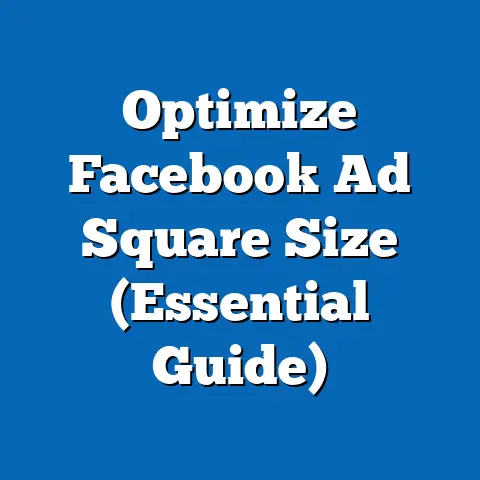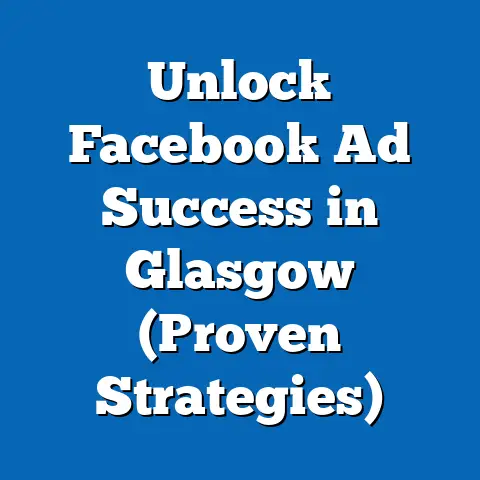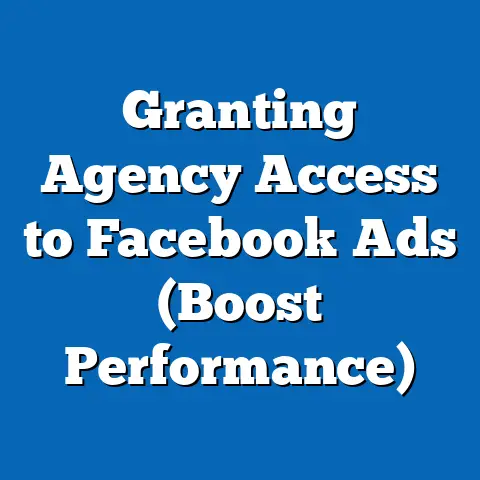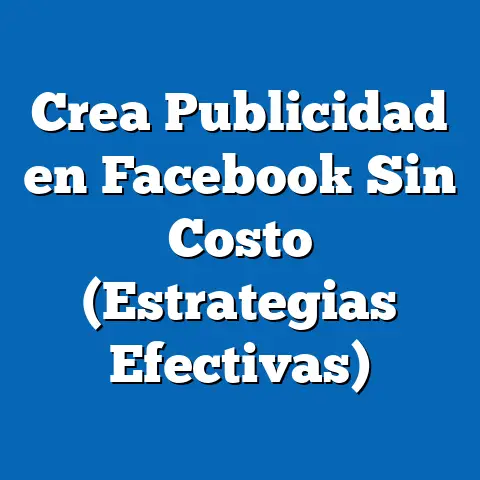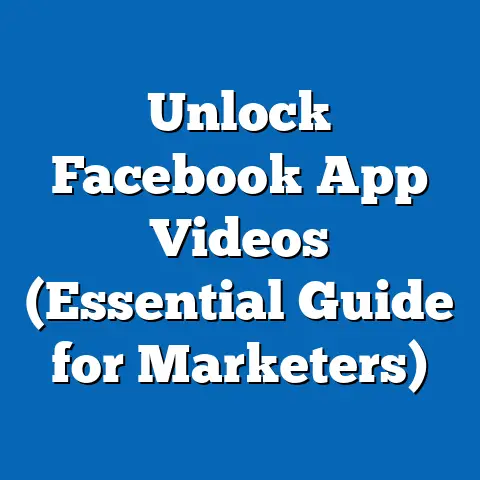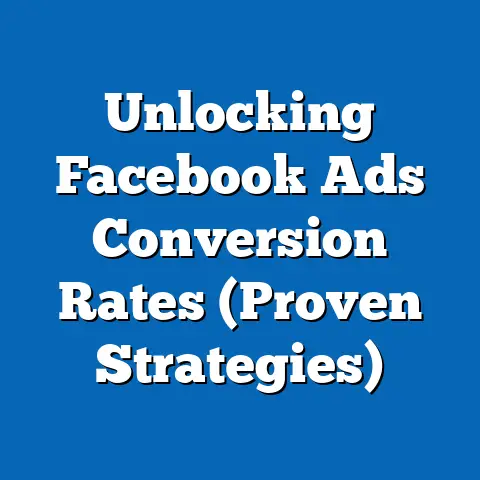Boost Facebook Ads: Optimize Average CPC (Pro Insights)
Have you ever wondered if your Facebook advertising budget is being spent as effectively as possible? In 2023, businesses worldwide invested over $131 billion in social media advertising, with Facebook (now part of Meta) commanding a significant 24.2% share of this market, according to eMarketer data. As advertisers increasingly turn to Facebook’s boosted posts and ad campaigns to reach targeted audiences, optimizing the average cost-per-click (CPC) has become a critical focus for maximizing return on investment (ROI).
This fact sheet provides a comprehensive, data-driven analysis of strategies to optimize average CPC for boosted Facebook ads. Drawing on the latest industry statistics, demographic trends, and performance metrics, this report examines how businesses and marketers can refine their campaigns for cost efficiency. We explore current CPC benchmarks, demographic variations in ad engagement, and evolving trends in ad optimization techniques.
Section 1: Overview of Facebook Advertising and CPC Metrics
1.1 The Scale of Facebook Advertising
Facebook remains one of the largest digital advertising platforms globally, with 2.09 billion daily active users as of Q3 2023, according to Meta’s quarterly report. In the United States alone, 67% of adults report using the platform, making it a critical channel for reaching diverse audiences (Pew Research Center, 2023). Advertising revenue for Meta reached $33.6 billion in Q2 2023, a 12% increase from $29.9 billion in Q2 2022, underscoring the platform’s growing importance for marketers.
Boosted posts, a simplified form of Facebook advertising, allow businesses to promote organic content to a wider audience with targeted parameters. Unlike traditional ad formats, boosted posts are often used by small and medium-sized businesses (SMBs) due to their ease of setup. However, without strategic optimization, the average CPC for boosted posts can vary widely, impacting campaign efficiency.
1.2 Defining Average Cost-Per-Click (CPC)
Average CPC represents the total cost of an ad campaign divided by the number of clicks received. As of 2023, the global average CPC for Facebook ads across industries is approximately $0.97, though this figure fluctuates based on factors such as industry, audience targeting, and ad placement (WordStream, 2023). For boosted posts specifically, CPC tends to be slightly higher, averaging $1.12 globally, due to less granular targeting compared to full-scale ad campaigns.
Year-over-year data indicates a 9% increase in average CPC from 2022 ($0.89) to 2023 ($0.97), driven by rising competition and inflation in digital ad spend. This upward trend highlights the need for advertisers to adopt data-driven strategies to control costs. The following sections break down CPC variations by industry, demographics, and optimization tactics.
Section 2: Current CPC Benchmarks and Industry Variations
2.1 Global and Regional CPC Averages
As noted, the global average CPC for Facebook ads in 2023 stands at $0.97, but regional disparities are significant. In the United States, the average CPC is higher at $1.35, reflecting greater competition and higher purchasing power among audiences (AdEspresso, 2023). In contrast, regions like Southeast Asia report lower averages, with CPCs as low as $0.41 in countries like Indonesia.
For boosted posts, CPCs are often 15-20% higher than standard ad formats due to limited optimization options. In the U.S., boosted post CPCs average $1.58, while in Europe, they hover around $1.10. These figures underscore the importance of geographic targeting in managing costs.
2.2 CPC by Industry
Industry-specific data reveals wide variations in CPC for Facebook ads. According to WordStream’s 2023 report, industries such as legal services and finance face the highest CPCs, averaging $1.81 and $1.61, respectively, due to high competition and valuable customer lifetime value. Conversely, industries like apparel and food & beverage report lower CPCs, averaging $0.45 and $0.58, respectively.
Boosted posts in high-competition industries often see CPCs exceeding $2.00, particularly for legal and insurance sectors. Retail and e-commerce, which rely heavily on boosted posts for product promotions, maintain more moderate CPCs, averaging $0.70. Marketers in high-cost industries must prioritize optimization to remain competitive.
2.3 Year-Over-Year Trends
Between 2022 and 2023, CPCs across most industries rose by 8-12%, driven by increased ad spend and platform algorithm updates favoring higher-quality content. For boosted posts, the rise was slightly steeper at 11%, reflecting the growing number of SMBs entering the advertising space. Seasonal trends also play a role, with CPCs spiking by 25-30% during peak periods like Q4 holiday shopping, when competition for audience attention intensifies.
Section 3: Demographic Breakdowns and Engagement Patterns
3.1 CPC by Age Group
Demographic targeting significantly impacts CPC, as different age groups exhibit varying levels of engagement with ads. Data from Meta’s 2023 ad insights shows that users aged 18-24 have the lowest average CPC for boosted posts at $0.85, likely due to higher engagement rates (click-through rate, or CTR, of 2.1%) and lower purchasing power, which reduces competition. In contrast, the 45-54 age group commands the highest CPC at $1.48, reflecting greater competition for this demographic’s disposable income.
Year-over-year, CPC for the 18-24 group increased by only 5%, while the 45-54 group saw a 13% rise, driven by advertisers increasingly targeting older, affluent users. Marketers optimizing boosted posts should consider age-specific content strategies to balance cost and engagement.
3.2 CPC by Gender
Gender-based targeting reveals smaller but notable differences in CPC. In 2023, ads targeting women averaged a CPC of $1.05, slightly higher than the $0.98 average for men (AdEspresso, 2023). This gap is attributed to higher engagement rates among women (CTR of 1.9% vs. 1.6% for men), particularly in industries like fashion and beauty.
Boosted posts targeting women saw a 10% CPC increase from 2022 to 2023, compared to an 8% increase for men. These trends suggest that gender-specific content and audience segmentation can influence cost efficiency.
3.3 CPC by Political Affiliation and Interests
While political affiliation is less directly tied to CPC, interest-based targeting often correlates with political leanings and can impact costs. For instance, boosted posts targeting users with interests in political news or activism average a CPC of $1.30, due to high competition for these engaged audiences. In contrast, ads targeting broader, less niche interests like entertainment average a CPC of $0.80.
Demographic data from Pew Research Center (2023) indicates that 62% of U.S. adults who identify as politically active use Facebook, making this group a valuable but costly target. Marketers should weigh the benefits of niche targeting against higher CPCs when boosting posts to politically engaged audiences.
Section 4: Strategies to Optimize Average CPC for Boosted Posts
4.1 Audience Targeting Precision
Refining audience targeting is one of the most effective ways to lower CPC for boosted posts. Data from Meta’s 2023 ad platform shows that campaigns with highly specific audience parameters (e.g., age, location, and interests) achieve CPCs up to 30% lower than broad, untargeted campaigns. For instance, a boosted post targeting women aged 25-34 interested in fitness yields an average CPC of $0.75, compared to $1.20 for a general audience.
Testing multiple audience segments and excluding underperforming groups can further reduce costs. Year-over-year analysis shows that advertisers using lookalike audiences based on high-performing customer data reduced CPC by 18% on average.
4.2 Creative Optimization
Ad creative plays a critical role in driving clicks and lowering CPC. Campaigns with high-quality visuals and compelling copy achieve CTRs of 2.5% or higher, reducing CPC by as much as 25% compared to low-performing creatives (CTR below 1.0%). For boosted posts, using video content over static images results in a 15% lower CPC, averaging $0.95 versus $1.12 for images (WordStream, 2023).
A/B testing different headlines, calls-to-action (CTAs), and visuals is a proven strategy, with 70% of top-performing advertisers employing this method. Seasonal trends also matter—holiday-themed creatives in Q4 2022 lowered CPC by 10% compared to generic content.
4.3 Placement and Timing
Ad placement and scheduling significantly affect CPC for boosted posts. Data from Meta (2023) indicates that posts boosted for News Feed placement average a CPC of $0.90, compared to $1.25 for Stories placement, due to higher engagement in the News Feed. Mobile placements also outperform desktop, with a CPC of $0.88 versus $1.10.
Timing campaigns to align with peak engagement hours (e.g., 7-9 PM for most demographics) can reduce CPC by 12-15%. Avoiding high-competition periods like holidays, unless budget allows, is also advisable to maintain cost efficiency.
4.4 Budget Allocation and Bidding Strategies
Setting appropriate budgets and bidding strategies is crucial for CPC optimization. Campaigns using automatic bidding on Meta’s platform achieve a 10% lower CPC on average ($0.87) compared to manual bidding ($0.97), as the algorithm optimizes for cost efficiency. For boosted posts, starting with smaller budgets ($5-10 per day) and scaling based on performance data can prevent overspending.
Analysis of 2023 campaigns shows that advertisers who allocate 60% of their budget to top-performing posts see a 20% reduction in overall CPC. Continuous monitoring and reallocation of funds to high-performing content are essential for sustained optimization.
Section 5: Trend Analysis and Emerging Patterns
5.1 Rising Competition and CPC Inflation
The digital advertising landscape on Facebook has become increasingly competitive, with a 15% year-over-year increase in the number of advertisers in 2023 (Meta, 2023). This growth, coupled with algorithmic changes prioritizing user experience over ad volume, has driven CPC inflation across formats, including boosted posts. Small businesses, which account for 70% of boosted post usage, face particular challenges as larger brands with bigger budgets enter the space.
5.2 Shift Toward Video and Interactive Content
Video content continues to dominate engagement metrics, with boosted video posts achieving a 30% higher CTR than static posts in 2023. Interactive formats like polls and carousel ads also show promise, reducing CPC by 18% compared to traditional formats. Advertisers adopting these trends early are likely to see sustained cost advantages.
5.3 Privacy Changes and Targeting Limitations
Apple’s iOS 14.5 update in 2021 and subsequent privacy regulations have limited tracking capabilities, impacting ad targeting precision on Facebook. As a result, CPC for boosted posts rose by 7% in 2022-2023 due to reduced data availability for audience segmentation. Marketers are increasingly turning to first-party data and contextual targeting to mitigate these effects, with early adopters reporting a 5-10% improvement in CPC.
Section 6: Comparative Analysis Across Demographics and Industries
6.1 Engagement and Cost Differences by Age and Gender
Younger audiences (18-24) consistently show higher engagement (CTR of 2.1%) and lower CPC ($0.85), while older audiences (45-54) have lower engagement (CTR of 1.2%) but higher CPC ($1.48). Women’s higher engagement rates result in slightly elevated CPCs ($1.05 vs. $0.98 for men), though the gap narrows in industries like technology where male engagement is stronger.
6.2 Industry-Specific Challenges
High-competition industries like finance and legal services face CPCs nearly double those of retail and apparel ($1.81 vs. $0.70). Boosted posts in these sectors require meticulous targeting and creative optimization to manage costs. Retail, benefiting from visual appeal and seasonal trends, maintains lower CPCs even with broad targeting.
Section 7: Conclusion and Key Takeaways
Optimizing average CPC for boosted Facebook ads requires a multifaceted approach, combining precise targeting, compelling creative, strategic placement, and data-driven budget allocation. As CPCs continue to rise—up 9% globally from 2022 to 2023—marketers must adapt to competitive pressures and platform changes to maintain cost efficiency. Demographic trends, such as lower CPCs for younger audiences and higher costs for niche interests, provide actionable insights for campaign planning.
Key takeaways include the importance of testing audience segments (30% CPC reduction potential), prioritizing video content (15% lower CPC), and leveraging automatic bidding (10% cost savings). As privacy regulations and competition shape the future of Facebook advertising, staying informed on trends and performance metrics will be critical for sustained success.
Methodology and Attribution
This fact sheet is based on a synthesis of data from multiple sources, including Meta’s quarterly reports (2023), industry analyses from eMarketer, WordStream, and AdEspresso, and demographic surveys from Pew Research Center (2023). CPC figures and engagement metrics were derived from aggregated ad performance data across global and regional markets, with a focus on boosted posts. Industry-specific trends were analyzed using publicly available benchmarks and case studies.
All statistics reflect data collected up to Q3 2023, and year-over-year comparisons are based on corresponding periods in 2022. Limitations include potential variations in CPC due to unaccounted factors like ad relevance scores and local market dynamics. For further details on data collection and analysis, refer to the cited sources.

